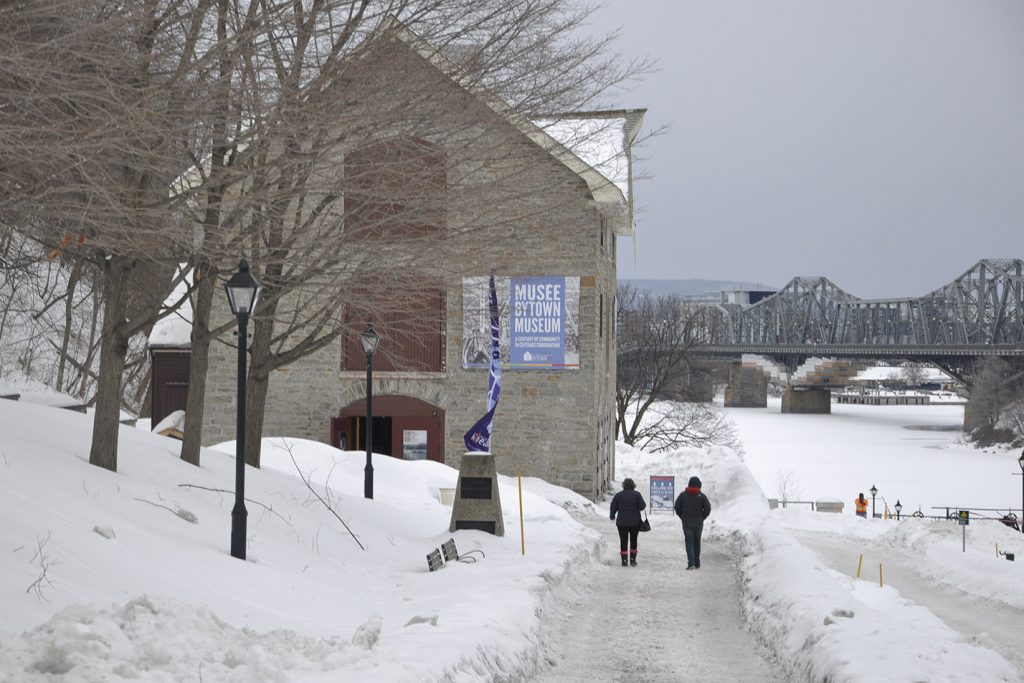Bytown museum marks century
By Kristian Kelly
Canada’s not the only one with a milestone anniversary in 2017. A historic Centretown institution is also celebrating a triple-digit birthday.
For a century, the Bytown Museum has offered insight into the rich history of Ottawa.
Now, the museum that overlooks the Rideau Canal and occupies Ottawa’s oldest stone building — erected during the building of the canal nearly 190 years ago — has put together a temporary exhibit to commemorate its 100th anniversary.
The exhibit, called Bytown Museum: A Century of Community, runs until February 2018. It features 100 artifacts that tell the story of Ottawa — half of them showcased in two gallery rooms and the other half scattered across the museum, to encourage visitors to look around.
Not all of the artifacts are awe-inspiring. Some are as basic as old tools used by an Ottawa engineer for canal maintenance.
“It’s really about connecting the real people of the history of Ottawa, not just concepts or events, but names and faces of people,” said Grant Vogl, the museum’s collections and exhibitions manager.
“You can connect with history a lot more if you know there’s a name behind it.”
The latest temporary exhibit looks into the long history of the museum itself, through a mixture of new pieces and older iconic ones.
This means everything from the popular, plaster “death hand” of assassinated Father of Confederation Thomas D’Arcy McGee to a recently obtained portrait of 19th-century lumber baron J.R. Booth, one of the richest men in the country. Vogl said his personal favourite is Fred Cook’s “amazing, beautiful” mayor’s chair, given to the museum when it opened in 1917.
The exhibit also features photographs that show the museum’s pre-establishment origins, going all the way back to 1898, when a handful of ladies started the Women’s Canadian Historical Society of Ottawa. These women wanted to preserve the city’s rich cultural heritage by collecting records and relics for exhibitions.
By 1917, the society needed somewhere permanent to display their artifacts, so the old registry office at 70 Nicholas St. became the Bytown Museum.
As the museum’s collections grew, it was in need of a larger home. In 1951, after significant repairs to the canal-side Commissariat building, the museum moved into the old army storehouse next to the Ottawa entrance locks and opened a year later.
The women’s society changed their name to the Historical Society of Ottawa and opened membership to men in 1956.
In a town with a history as interesting as Ottawa’s, it’s important to have a place like the Bytown Museum, said Glen Shackleton, president of Haunted Walks.
Shackleton has supported the museum for nearly 20 years.
“In Ottawa, we are very spoiled for having a lot of wonderful national institutions and museums, but what I really like is . . . the museums like the Bytown Museum have a chance to tell the local story,” he said.
The museum has come a long way, said executive director Robin Etherington.
Though the collection started small in 1898, Etherington said the museum now has artifacts of a national calibre, something she called “an unbelievable accomplishment for a community museum.”
She attributed the museum’s longevity to its adaptability.
Museum staff have embraced the digital age, bringing 2,600 records online. They have a new computer system and a website that’s more “user-friendly,” she noted, and social media now makes up the vast majority of the museum’s marketing.
Over the century, the museum has also grown alongside the city whose history it preserves.
“Ottawa … isn’t a little town anymore,” Etherington said.
Among the museum’s centennial celebrations will be a week of events in early July that feature theatrical and choral performances, lectures, a human library and more.

